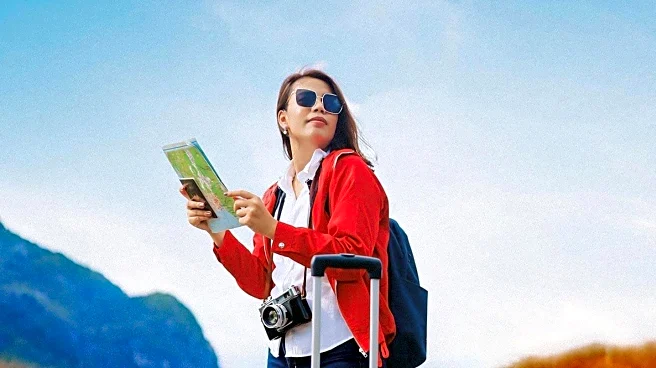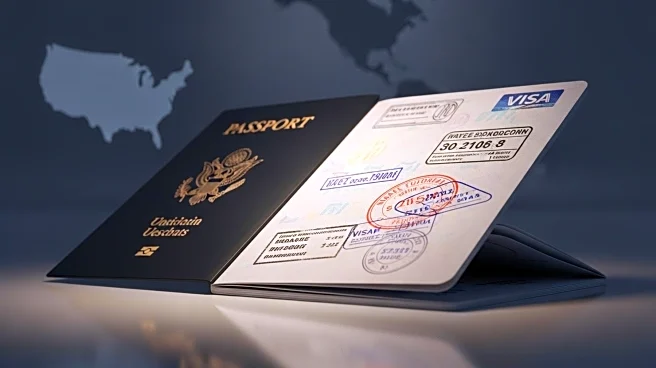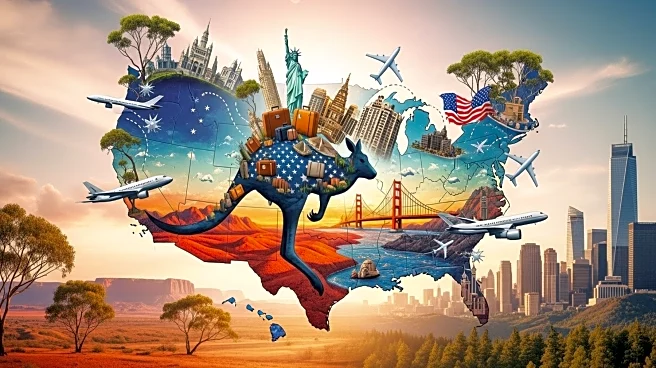What's Happening?
Recent insights from experienced solo female travelers highlight strategies for safe and fulfilling travel experiences. These travelers emphasize the importance of blending organized tours with independent exploration to maximize cultural immersion and personal safety. For instance, one traveler shared her experiences in India, where she balanced local customs with personal comfort by dressing modestly in public areas. Additionally, the use of government programs like the U.S. Smart Traveler Enrollment Program is recommended for safety. Solo travelers are also advised to engage in activities such as yoga or language classes to meet others and enrich their travel experiences. Dining at restaurant bars and using traditional guidebooks instead of relying solely on smartphones are also suggested to enhance safety and social interaction.
Why It's Important?
The growing trend of solo female travel reflects broader societal shifts towards independence and empowerment. This trend has significant implications for the travel industry, which must adapt to cater to the unique needs of solo female travelers. Safety remains a primary concern, and the industry can benefit from offering more secure and inclusive travel options. Additionally, the emphasis on cultural respect and personal safety highlights the importance of responsible tourism. As more women choose to travel alone, there is potential for increased economic activity in destinations that are perceived as safe and welcoming. This trend also encourages cultural exchange and understanding, contributing to global connectivity.
What's Next?
As the trend of solo female travel continues to grow, travel companies and destinations may increasingly tailor their offerings to this demographic. This could include more women-only tours, enhanced safety measures, and community-building activities. Additionally, there may be a rise in digital platforms and apps designed to support solo female travelers, providing resources for safety, accommodation, and local experiences. The travel industry might also see collaborations with safety organizations to develop comprehensive travel safety programs. As these developments unfold, they could lead to a more inclusive and diverse travel landscape.











